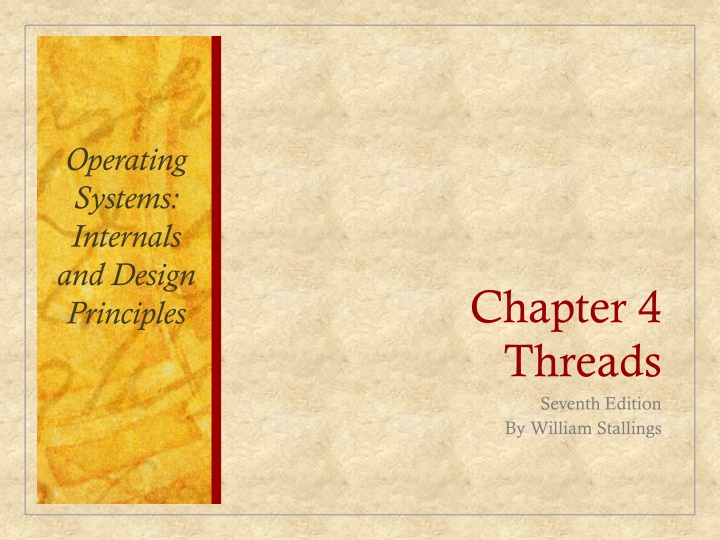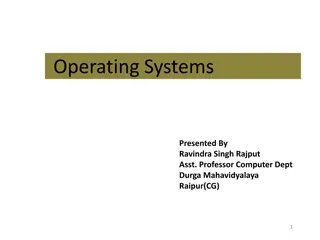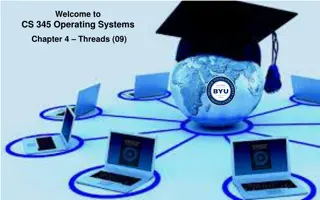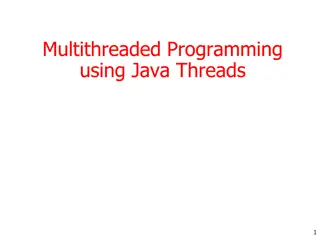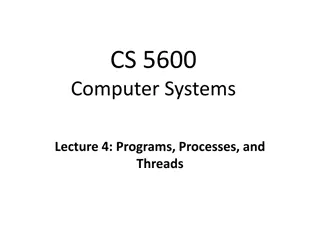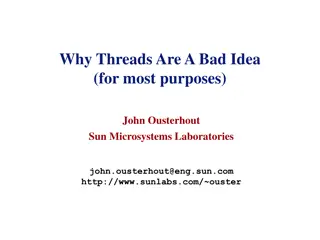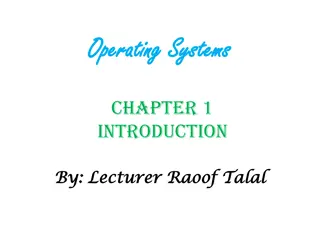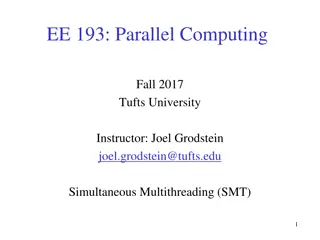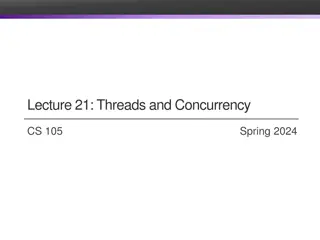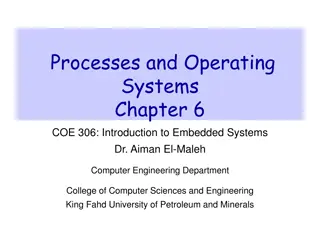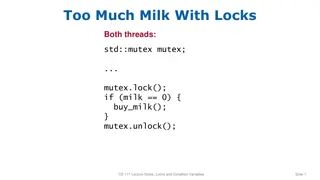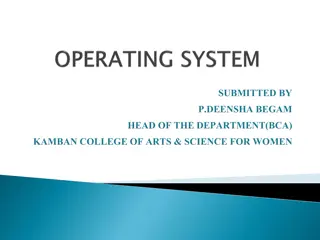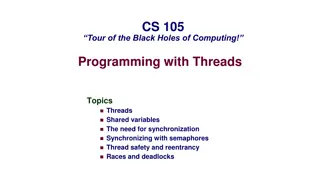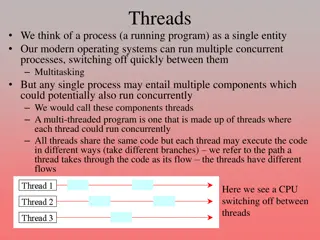Threads in Operating Systems: Key Principles
This text delves into the fundamentals of threads in operating systems, covering topics such as traditional processes, multithreading, single-threaded and multithreaded approaches, process ownership, and characteristics of threads within a process.
Download Presentation

Please find below an Image/Link to download the presentation.
The content on the website is provided AS IS for your information and personal use only. It may not be sold, licensed, or shared on other websites without obtaining consent from the author.If you encounter any issues during the download, it is possible that the publisher has removed the file from their server.
You are allowed to download the files provided on this website for personal or commercial use, subject to the condition that they are used lawfully. All files are the property of their respective owners.
The content on the website is provided AS IS for your information and personal use only. It may not be sold, licensed, or shared on other websites without obtaining consent from the author.
E N D
Presentation Transcript
Operating Systems: Internals and Design Principles Chapter 4 Threads Seventh Edition By William Stallings
Processes and Threads Traditional processes have two characteristics: Resource Ownership Scheduling/Execution Process includes a virtual address space to hold the process image Follows an execution path that may be interleaved with other processes a process has an execution state (Running, Ready, etc.) and a dispatching priority and is scheduled and dispatched by the OS Traditional processes are sequential; i.e. only one execution path the OS provides protection to prevent unwanted interference between processes with respect to resources
Processes and Threads Multithreading - The ability of an OS to support multiple, concurrent paths of execution within a single process The unit of resource ownership is referred to as a process or task The unit of dispatching is referred to as a thread or lightweight process
Single Threaded Approaches A single execution path per process, in which the concept of a thread is not recognized, is referred to as a single-threaded approach MS-DOS, some versions of UNIX supported only this type of process.
Multithreaded Approaches The right half of Figure 4.1 depicts multithreaded approaches A Java run-time environment is a system of one process with multiple threads; Windows, some UNIXes, support multiple multithreaded processes.
Processes In a multithreaded environment the process is the unit that owns resources and the unit of protection. i.e., the OS provides protection at the process level Processes have A virtual address space that holds the process image Protected access to processors other processes files I/O resources
One or More Threads in a Process Each thread has: an execution state (Running, Ready, etc.) saved thread context when not running (TCB) an execution stack some per-thread static storage for local variables access to the shared memory and resources of its process (all threads of a process share this)
Benefits of Threads Less time to terminate a thread than a process Threads enhance efficiency in communication between programs Switching between two threads takes less time than switching between processes Takes less time to create a new thread than a process
Thread Use in a Single-User System Foreground and background work Asynchronous processing Speed of execution Modular program structure
Threads In an OS that supports threads, scheduling and dispatching is done on a thread basis Most of the state information dealing with execution is maintained in thread-level data structures suspending a process involves suspending all threads of the process termination of a process terminates all threads within the process
Thread Execution States Thread operations associated with a change in thread state are: The key states for a thread are: Running Ready Blocked Spawn (create) Block Unblock Finish
Multithreading on a Uniprocessor
Thread Synchronization It is necessary to synchronize the activities of the various threads all threads of a process share the same address space and other resources any alteration of a resource by one thread affects the other threads in the same process
Relationship Between Threads and Processes Table 4.2 Relationship between Threads and Processes
Multiple Cores & Multithreading Multithreading and multicore chips have the potential to improve performance of applications that have large amounts of parallelism Gaming, simulations, etc. are examples Performance doesn t necessarily scale linearly with the number of cores
Amdahls Law Speedup depends on the amount of code that must be executed sequentially Formula: Speedup = time to run on single processor time to execute on N || processors 1 = (1 f) + f / N (where f is the amount of parallelizable code)
Performance Effect of Multiple Cores Figure 4.7 (a) Figure 4.7 (b)
Windows Processes Processes and services provided by the Windows Kernel are relatively simple and general purpose implemented as objects created as new process or a copy of an existing an executable process may contain one or more threads both processes and thread objects have built-in synchronization capabilities
Process and Thread Objects Windows makes use of two types of process-related objects: Processes Threads an entity corresponding to a user job or application that owns resources a dispatchable unit of work that executes sequentially and is interruptible
Windows Process and Thread Objects
Multithreaded Process Achieves concurrency without the overhead of using multiple processes Threads within the same process can exchange information through their common address space and have access to the shared resources of the process Threads in different processes can exchange information through shared memory that has been set up between the two processes
Thread States Figure 4.12 Windows Thread States
Linux Tasks A process, or task, in Linux is represented by a task_struct data structure This structure contains information in a number of categories
Linux Process/Thread Model Figure 4.16 Linux Process/Thread Model
Linux Threads Linux does not recognize a distinction between threads and processes A new process is created by copying the attributes of the current process The clone() call creates separate stack spaces for each process User-level threads are mapped into kernel- level processes The new process can be cloned so that it shares resources
